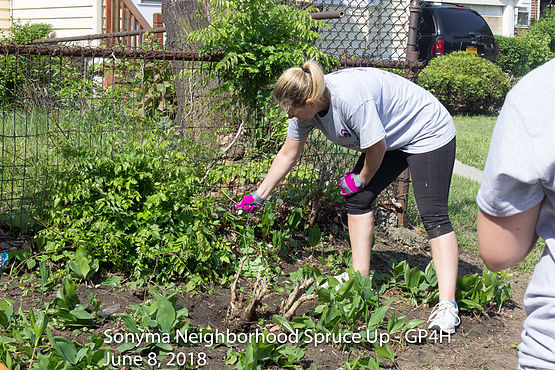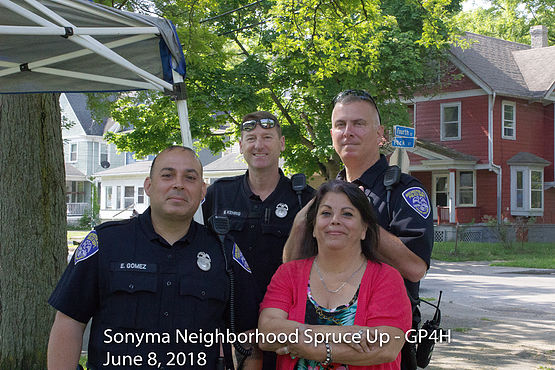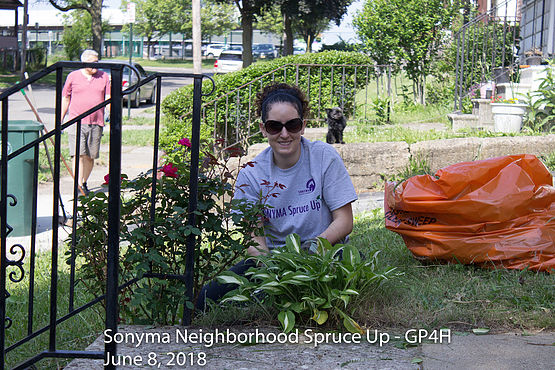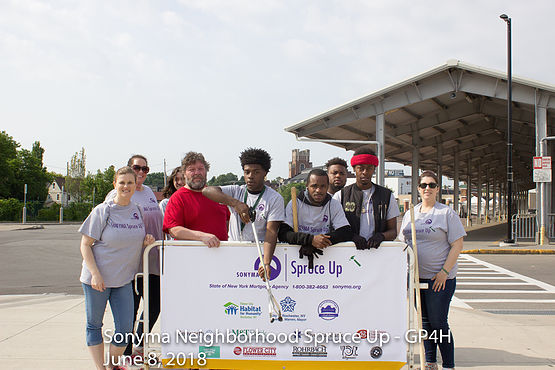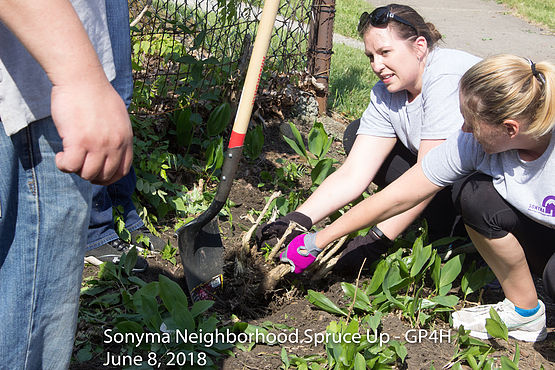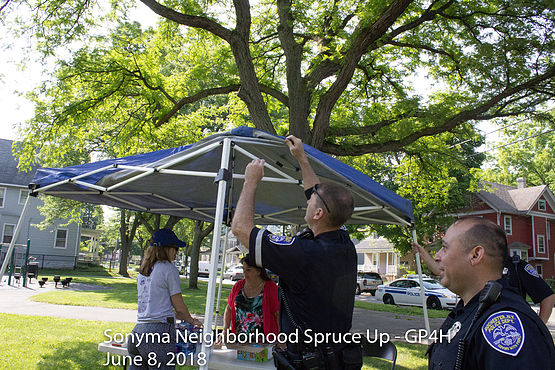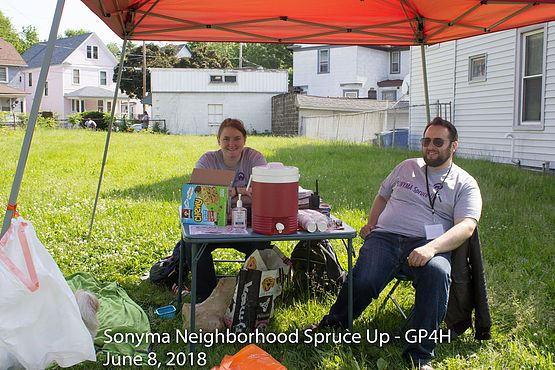Coordinate and implement strategies to reduce vacant and abandoned properties, enabling our community to thrive
QUICK RESOURCES
ABOUT US
OUR HISTORY
The Monroe County Vacant Property Resource Hub provides information and services aimed at reducing the number of “zombie” and vacant properties in our community. The website offers resources to four key stakeholder groups: Homeowners; Neighbors; Sellers and Buyers; and Municipalities.
The Monroe County Vacant Property Resource Hub was born out of the previous Monroe County Vacant and Abandoned Property Task Force, brought together by Adam Bello as then County Clerk in April 2016. For five years, the Task Force engaged the public, focused on neighborhoods in need, and sought to educate residents on homeownership, property maintenance, and the impact of vacant properties. The Resource Hub has come to life under the efforts of the Monroe County Vacant Property Advisory Committee, formally created by County Executive Bello in March 2021, to continue to improve the state of vacant properties in communities across the county. Funding to develop and maintain the Resource Hub Special was provided by the City of Rochester through a grant from the Local Initiative Support Corporation (LISC).
FREQUENTLY ASKED QUESTIONS
Previously, then County Clerk Adam Bello created the Monroe County Vacant and Abandoned Property Task Force (“Task Force”) based on an idea: How can we best deal with the problems surrounding vacant and abandoned properties? Follow its inception in 2016, the Task Force has tried to connect vacant properties to their owners, hold banks and mortgage servicers accountable for the upkeep and turnover of foreclosed vacant properties, and affect legislation surrounding vacant properties across Monroe County. In 2021, the Advisory Committee was formally created by County Executive Bello to continue the work of the Task Force and further engage a network local government and community leaders and partners to work collaboratively to tackle the negative impacts of vacant, abandoned, and tax-delinquent properties and develop strategies to return them to productive use.
There are many reasons why a property becomes vacant, and even more reasons why it stays that way so long. Often, there is a lack of information about who owns the property or, even more often, who has an interest in the property following an owner’s death. Additionally, if there is a mortgage on the property, it could be going through New York State’s foreclosure process, which takes 2.5 years on average.
The Advisory Committee is focused on providing information and resources to homeowners and concerned neighbors, which can be found by exploring this Resource Hub.
This is one of the most asked questions! Although there is not a comprehensive publicly accessible list of vacant properties, there are various resources and methods available to research vacant properties. The City of Rochester uses a program called Building Blocks as a resource for information about known vacant properties within the City limits. The Monroe County Clerk has land record information. Additionally, your local code officials or building department may have information on vacant and abandoned mortgaged properties through the New York State Department of Financial Services registry database.
Our Resources for Neighbors page has information about all of these resources.
 A MESSAGE FROM
A MESSAGE FROM
County Executive Adam J. Bello and Rochester Mayor Malik D. Evans
The vibrancy and vitality of our neighborhoods is critical. From our years of work in government, we have heard from residents across Monroe County that vacant properties are often the single most concerning  issue facing them as homeowners. Responding to these concerns, together we have created this resource hub. Our goal is to inform and empower our residents, help them keep their communities safe and clean, and improve the quality of life for everyone across the city of Rochester and Monroe County.
issue facing them as homeowners. Responding to these concerns, together we have created this resource hub. Our goal is to inform and empower our residents, help them keep their communities safe and clean, and improve the quality of life for everyone across the city of Rochester and Monroe County.
UPCOMING EVENTS
Events in October 2024
| SSunday | MMonday | TTuesday | WWednesday | TThursday | FFriday | SSaturday |
|---|---|---|---|---|---|---|
| 29September 29, 2024 | 30September 30, 2024 | 1October 1, 2024 | 2October 2, 2024 | 3October 3, 2024 | 4October 4, 2024 | 5October 5, 2024 |
| 6October 6, 2024 | 7October 7, 2024 | 8October 8, 2024 | 9October 9, 2024 | 10October 10, 2024 | 11October 11, 2024 | 12October 12, 2024 |
| 13October 13, 2024 | 14October 14, 2024 | 15October 15, 2024 | 16October 16, 2024 | 17October 17, 2024 | 18October 18, 2024 | 19October 19, 2024 |
| 20October 20, 2024 | 21October 21, 2024 | 22October 22, 2024 | 23October 23, 2024 | 24October 24, 2024 | 25October 25, 2024 | 26October 26, 2024 |
| 27October 27, 2024 | 28October 28, 2024 | 29October 29, 2024 | 30October 30, 2024 | 31October 31, 2024 | 1November 1, 2024 | 2November 2, 2024 |
Vacant Property Fast Facts
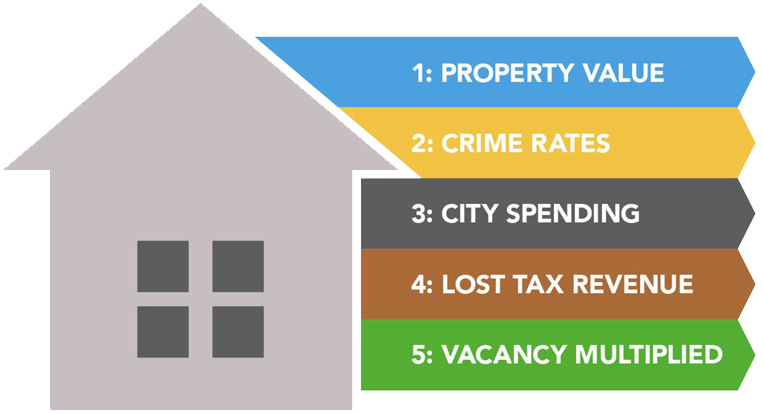
1– Property Value: Property values of vacant foreclosed homes typically drop by 38% (varied by locality)
2– Crime Rates: Crime rates within 250 feet of a vacant foreclosed home increase 10% annually, on average. Theft, vandalism, and arson are the most common, with arson costing $30,000 per home.
3– City Spending: Police and fire department costs increase $1,500 per vacant home. Some public work departments also experience expenses in maintaining vacant homes (e.g., grass cuts, boarding).
4– Lost Tax Revenue: Property value decreases can result in up to an 83% reduction in tax revenue from vacant foreclosed properties (per a 2005 estimate).
5– Vacancy Multiplied: Hyper-vacancy occurs when more than 20% of homes in a defined area are vacant, indicating vacancy could grow indefinitely.
COMMUNITY IMPACT OF VACANT PROPERTIES
Vacant properties can include abandoned homes, buildings, and unused lots. Many of these structures have been unoccupied for over a year and can pose a health hazard and danger to public safety.
The cost of abandoned properties to municipalities includes attending to and monitoring criminal activity, health and safety hazards, and lost tax revenue.
The impact to surrounding homes are lower property values, increased insurance premiums, and a poorer quality of life.
“Appearing different”
Securing vacant properties without clearly signaling they are abandoned may save as much as $85,000 in avoided property value losses. Techniques like using alternatives to plywood (e.g., window/door replacement, clear-boarding) to secure properties have been successful in communities that have tried such innovative approaches.
Sources:
Klein, Aaron. Understanding the True Costs of Abandoned Properties: How Maintenance Can Make a Difference. White paper written for Community Blight Solutions, January 2017.
Mallach, Alan. The Empty House Next Door: Understanding and Reducing Vacancy and Hypervacancy in the United States. Lincoln Institute of Land Policy, 2018.
Bass, Margaret, et all. Vacant Properties: The True Costs to Communities. National Vacant Properties Campaign, August 2005.
Our Events, Our Projects, and Our Communities


